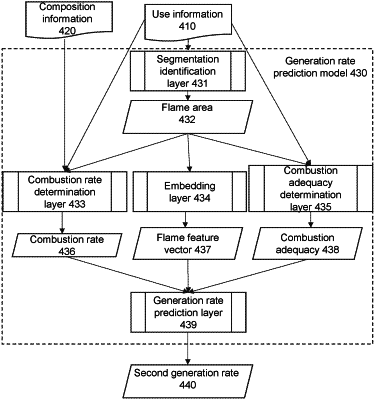| CPC G08B 21/16 (2013.01) [G08B 1/08 (2013.01); G08C 17/00 (2013.01); G08C 2200/00 (2013.01)] | 8 Claims |

|
1. A method for monitoring smart gas harmful components, wherein the method is performed by a smart gas safety management platform of a smart gas household safety management Internet of Things system, and the method comprises:
obtaining composition information of a gas and use information of a user;
determining a generation rate of harmful components of the gas based on the composition information and the use information; and
generating warning information in response to the generation rate of the harmful components being greater than a generation rate threshold;
wherein the determining a generation rate of harmful components of the gas based on the composition information and the use information includes:
determining a first generation rate of the harmful components based on the composition information;
determining a second generation rate by a generation rate prediction model based on the composition information and the use information, wherein the generation rate prediction model is a machine learning model; the generation rate prediction model comprises a segmentation identification layer, an embedding layer, a combustion rate determination layer, a combustion adequacy determination layer and a generation rate prediction layer,
the segmentation identification layer used to determine a flame area based on the use information, the embedding layer used to determine a flame feature vector based on the flame area, the combustion rate determination layer used to determine the combustion rate based on the flame area, the composition information, and the use information, the combustion adequacy determination layer used to determine the combustion adequacy based on the flame area, and the generation rate prediction layer used to determine the second generation rate based on the flame feature vector;
wherein the combustion rate determination layer and the combustion adequacy determination layer are obtained by joint training with the segmentation identification layer, the embedding layer, and the generation rate prediction layer;
determining the generation rate of the harmful components based on the first generation rate and the second generation rate.
|